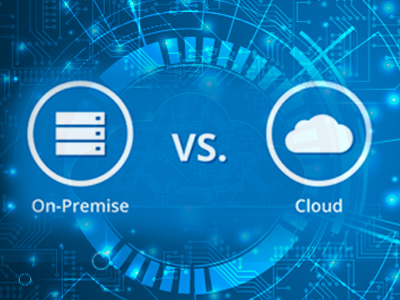In the modern and competitive business world, companies take into account various factors to opt for a cloud or on-premise infrastructure. In both cases, companies don’t prefer to generalize and focus on their specific business needs to choose between on-premise and cloud infrastructure.
In 2021, many companies have moved to the cloud and are now free from the limitations of legacy systems. Of course, organizations can still run software and applications through on-premise infrastructure.
Major Differences between On-Premise and Cloud
Deployment
When it comes to an on-premise, resources stay and within an organization’s It infrastructure. It makes the enterprise responsible to maintain the on-premise solution and its associated processes. In a public, private, or hybrid cloud, enterprises host resources on the CSP’s server to access data. It cuts out the need to maintain internal hardware all the need and allows organizations to store a multitude of information at any time.
Control
In a typical on-premise setup, enterprises have complete control over their data. Organizations that prioritize secrecy and privacy opt for an on-premise environment. In a modern cloud environment, data ownership is not as straightforward as an on-premise environment. In the cloud, encryption keys and resources are stored within a third-party cloud service provider. So, if a disaster strikes with a provider, you might not be able to get access to your data.
Cost
Organizations that deploy on-premise software have to take care of the ongoing cost of power consumption, space, and server hardware. In the cloud, enterprises use and depend on a cloud computing model that takes care of the resources. One of the hallmark aspects of the cloud is that it doesn’t require maintenance and cuts out upkeep costs.
Compliance
Despite the industry, most companies operate under regulatory control. It is essentially a mechanism that mandates organizations to follow industry-driven rules and data usage. In an on-premise setting, most regulations like HIPAA and FEPRA make sure there is no violation of records and mandate enterprises to adhere to compliance management.
Compliance management takes a different shape in a cloud environment. But enterprises that select a cloud computing model have to be diligent and make sure their third-party cloud provider is compliant with the regulatory requirements of their industry. The objective of compliance in the cloud is the same as on-premise; to protect the sensitive information of partners, employees, and customers.
Security
Banking and government industries that want to secure their sensitive data opt for an on-premise environment. The cloud shows a lot of promise, but security is more advanced and compact when it comes to an on-premise environment.
But unlike cloud, on-premise has more drawbacks and comes with a high price tag. In the cloud, security is undeniably the main concern and acts as a barrier for many organizations to deploy cloud computing. In fact, there have been many cloud breaches that often befuddle IT departments.
Of course, in the past few years, more organizations have started to move to the cloud because of its flexibility. But it doesn’t change the fact that intellectual property, resources, and login credentials are vulnerable to security threats in the cloud environment.
Which One Should You Choose?
When it comes to scalability, flexibility, and speed, cloud infrastructure makes more sense. But cloud computing has become the next big switch for most organizations. Still, your business should be aware of the perks and limitations of cloud and on-premise infrastructure to make the right call.
Sum Up
If you want to figure out the “right” fit for your organization, consider “your” business requirements to choose on-premise or cloud infrastructure. If you move to the cloud, you will be able to conduct full cloud migration. It would allow you to roll out cloud computing efforts and achieve scalability and growth. It is an exciting time because many organizations have started to use a wide range of cloud-based services.
VAST offers cloud backup, storage, recovery, and migration solutions. We also offer a hybrid cloud solution to make the most out of your private and public cloud infrastructure. Please reach out for more information about our cloud services.



